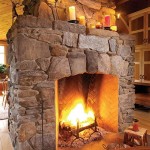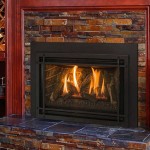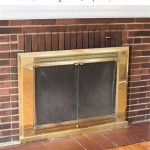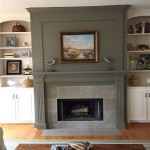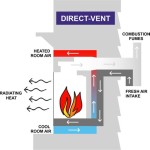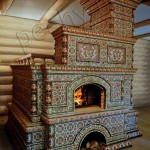Stackable Stone Fireplace: Aesthetics, Installation, and Design Considerations
Stackable stone fireplaces offer a visually appealing and relatively straightforward method for creating a traditional or modern fireplace ambiance. This type of fireplace involves utilizing manufactured stone veneers that are designed to interlock and create the appearance of a natural stone fireplace, without the complexities and weight associated with using actual natural stone. This article will explore the key aspects of stackable stone fireplaces, including the aesthetic benefits, installation procedures, design considerations, and potential challenges.
Aesthetic and Design Versatility
One of the primary advantages of stackable stone fireplaces is the wide range of aesthetic options available. Manufactured stone veneers come in various colors, textures, and profiles, mimicking different types of natural stone such as fieldstone, river rock, ledge stone, and dry-stack stone. This allows homeowners to select a style that complements their existing interior design and architectural features. Whether you prefer a rustic, traditional look or a sleek, contemporary design, stackable stone veneers can be adapted to suit diverse preferences.
The versatility extends beyond the stone's appearance. The modular nature of stackable stone allows for creative design possibilities. For example, homeowners can incorporate different stone profiles within the same fireplace surround to create a unique and dynamic look. Accenting specific areas with contrasting colors or textures can further enhance the visual appeal. Moreover, stackable stone can be used not only for the fireplace surround but also for adjacent accent walls or architectural features, creating a cohesive and unified design throughout the room.
Consider the scale and proportion of the stone relative to the size of the fireplace and the room. Larger stones can create a more dramatic and imposing effect, while smaller, more delicate stones can lend a more refined and subtle ambiance. The color of the stone should also be carefully considered in relation to the existing color palette of the room. Neutral tones such as grays, tans, and creams are versatile and can easily blend with a variety of décor styles, while bolder colors can be used to create a focal point and add visual interest.
Lighting plays a crucial role in accentuating the texture and color of the stackable stone. Incorporating uplighting or downlighting can highlight the natural variations in the stone and create depth and dimension. The type of lighting fixture and the color temperature of the light bulb can also impact the overall ambiance of the fireplace. Warmer light tones can create a cozy and inviting atmosphere, while cooler tones can create a more modern and sophisticated look.
Installation Process and Considerations
The installation of a stackable stone fireplace, while generally less complex than installing a natural stone fireplace, still requires careful planning and execution. The process typically involves preparing the surface, applying mortar, and carefully adhering the stone veneers to the substrate.
The first step in the installation process is to ensure that the surface to which the stone will be applied is clean, level, and structurally sound. This often involves applying a scratch coat of mortar to the existing surface to create a uniform and textured surface for adhesion. In some cases, it may be necessary to install a metal lath to provide additional support and reinforcement, especially if the substrate is prone to cracking or movement.
Once the surface is prepared, a high-quality mortar specifically designed for manufactured stone veneers should be applied. The mortar acts as the adhesive that secures the stone to the substrate. It is important to follow the manufacturer's instructions regarding the mixing and application of the mortar. The mortar should be applied evenly to the back of each stone veneer, ensuring full contact with the surface.
The stones are then carefully placed onto the prepared surface, interlocking them to create a seamless and natural-looking appearance. A level should be used to ensure that the stones are aligned properly and that the fireplace surround is plumb and square. Spacers may be necessary to maintain consistent joint widths between the stones, depending on the desired aesthetic. Excess mortar should be cleaned away promptly to prevent staining and ensure a clean, professional finish. The drying and curing time for the mortar must be adhered to before the fireplace is used.
Safety is paramount during the installation process. Appropriate personal protective equipment (PPE) such as safety glasses, gloves, and dust masks should be worn to protect against potential hazards. Proper ventilation is necessary to avoid inhaling dust and fumes from the mortar. The installation should adhere to local building codes and regulations to ensure the structural integrity and safety of the fireplace.
Design Planning and Budgeting
Careful planning is essential for a successful stackable stone fireplace project. This includes considering the overall design of the room, the dimensions of the fireplace, and the type of stone veneer that will be used. A detailed plan will help to ensure that the finished fireplace meets the desired aesthetic and functional requirements.
Begin by measuring the available space for the fireplace surround. This will help determine the appropriate size and proportions of the fireplace. Consider the height, width, and depth of the surround, as well as the distance from the fireplace opening to the surrounding walls. These measurements will inform the amount of stone veneer needed and the overall layout of the design.
Create a design sketch or use a computer-aided design (CAD) program to visualize the fireplace surround. This will allow you to experiment with different stone profiles, colors, and patterns. Consider incorporating architectural details such as mantels, hearths, and corbels to enhance the visual appeal of the fireplace. Pay attention to the symmetry and balance of the design to create a harmonious and aesthetically pleasing effect.
Budgeting is a critical aspect of the planning process. The cost of a stackable stone fireplace can vary depending on the type of stone veneer, the size of the fireplace, and the complexity of the installation. Obtain quotes from multiple suppliers and contractors to compare prices and ensure that you are getting the best value for your money. In addition to the cost of the materials and labor, factor in any additional expenses such as permits, tools, and equipment.
Consider the long-term maintenance requirements of the fireplace. While stackable stone is generally durable and low-maintenance, it may require occasional cleaning to remove dust, dirt, and soot. A mild detergent and water can be used to clean the stone. Avoid using harsh chemicals or abrasive cleaners, as these can damage the surface. Regular inspections can help identify any potential problems such as cracks or loose stones. Addressing these issues promptly can prevent further damage and extend the life of the fireplace.
Choosing a qualified and experienced contractor is essential for a successful installation. A reputable contractor will have the knowledge, skills, and expertise to properly install the stackable stone veneer and ensure that the fireplace meets all safety and building code requirements. Check the contractor's references and portfolio to assess their previous work. Obtain a written contract that outlines the scope of the project, the timeline, and the payment terms.
The heat-resistance properties of stackable stone veneers should also be carefully considered, especially for fireplaces that are used frequently. Ensure that the stone veneer is rated for high-temperature applications and that it is installed according to the manufacturer's instructions. Using a fire-resistant mortar and backer board can further enhance the safety and durability of the fireplace. Proper ventilation is necessary to prevent the buildup of heat and ensure the efficient operation of the fireplace.
Finally, consider the sustainability of the materials used in the fireplace construction. Manufactured stone veneers are often made from recycled materials, which can help to reduce the environmental impact of the project. Choosing locally sourced materials can further minimize the carbon footprint. Properly disposing of waste materials from the installation can also contribute to a more sustainable outcome. Recycling or repurposing materials whenever possible can help to reduce waste and conserve resources.
.jpg?strip=all)
Tips And Tools For Professional Stacked Stone Fireplaces

12 Stacked Stone Fireplace Ideas For Optimal Coziness

12 Stacked Stone Fireplace Ideas For Optimal Coziness

5 Stacked Stone Surrounds Travertine Quartzite Or Marble

Pin On Woodworking

Is A Cozy Stacked Stone Fireplace Your Next Dream Project

Contemporary Living Room Stacked Stone Fireplace Wooden Mantel Glass Coffee Table Modern Fireplaces Wall

Nantucket Stacked Stone I Xl Building S

Stacked Stone Fireplace 10 Luxurious Design Ideas Stoneyard

Tips And Tools For Professional Stacked Stone Fireplaces

